Mr. Blake, as one of the pioneers of Pop Art in the late ’50 and early ’60s, do you think Pop Art is still relevant today?
I think that the movement as such should have stopped in about ’64. But the importance of it and the reason for it goes on. People will always be interested in popular culture, so Pop Art as a movement – in the same way that Cubism was a movement confined to a period of time… Picasso went on to other things, and Gris and Braque, and Cubism actually kind of stops, and Pop Art should have stopped. My other little lecture is about Lichtenstein, who I think simply did it for the money.
What about Warhol?
Andy did it for the money, but it was a concept, it was a game, it was what it was about. And it was brilliant. Lichtenstein did Popeye and showed it to Castelli, who liked it, sold it, and pretty much said, “Can you do some more in this style?” Before that he was veering towards being an abstract expressionist, so my theory is that he was a frustrated abstract expressionist and a lot of the work is about that.
It doesn’t sound like you are a big fan of Lichtenstein.
I looked at the book the other day and he’s better than I say he is because there’s a broad range of subject matter. He did do lenticulars and he did do sculpture, but he was trapped by the Ben-Day dot. He was trapped by that motif and he went in that direction when he should have opened up more.
Are you still interested in pop culture?
I’m interested in graffiti and I’m interested in street art and I’m interested in skateboarders. I don’t necessarily take anything from it, but I know quite a lot of the street artists. There were a couple that wanted to do things together. It’s a continued living interest in popular culture.
Who do you think best represents the spirit of Pop Art now?
I don’t think I really know because I’ve gone beyond the age limit of being able to stay interested. I was interested up until the Young British Artists and I vaguely know what’s going on now, but there are so many artists now and so many different ways of… It’s a different age. I’m a dinosaur in the art world now, separate from it in a curious way.
Do you think the contemporary art world takes itself a little bit too seriously these days?
A part of it does, yeah. It’s so much bigger now. I mean, when I started being an artist, there was only a couple of us. There was the history of art, and then there was British art up until the war. And then there’s Henry Moore, and Nicholson, and a few people before me. Then me and a group of people. It’s like ripples on a pool, isn’t it? Now there are millions of artists.
And they have to try much harder to differentiate themselves.
It was much easier to be unique when I was younger because there were so few of us. Now they’re trying to find their way and trying to be unique…
Was that your approach at all?
One of my mottos is “Staying ahead of the avant-garde,” which you can’t do of course. But I jump about. I can’t be pinned down, in a way. I was at the Royal College with Frank Auerbach, who is a brilliant painter, very consistent, you know exactly what he’s doing. They sell for a lot of money, he keeps his integrity, whereas I jump about and confuse people. I’m both a graphic designer and a painter and I do all kinds of things. It’s easy to like the work, but it’s complex. It’s difficult for people. I think I’m always misunderstood. (Laughs)
But you’ve still been pretty successful.
Perhaps because I’ve been inconsistent. In Frank’s case, he didn’t wear out. He’s still doing them, and they’re still good pictures, and they have evolved but he’s kept it going. Some people do burn out. If you’re doing one thing, you can burn yourself out. But for me, if ever one of those things burnt out, I would have moved to another one. So it makes it difficult but it makes it possible to keep going. That and the fact that I’ve never made the highest mountains. I’ve stayed in the middle. I’ve never dropped very far and I’ve never gone to the top, so I’ve kept going somewhere around the middle in terms of fame, success. I’ll never have to fall off the top of the mountain.
Which is not all that bad, really.
It’s ideal. I mean, it wasn’t ideal for a long time, because for a long time – not that long ago, perhaps fifteen years ago – I literally had no money. We were broke and the bank wouldn’t let me have any money. And on a certain day we had no way to get food… So it has been difficult financially, but it’s settled and it’s fine now. I’m not the multimillionaire by any means. I’m not a millionaire, in fact.
But when I look around your studio here, there are certain pieces you could have certainly sold for a lot of money and you chose not to.
Yes, exactly. It’s not my work, but the wax figure of Sonny Liston, because it was on the Sgt. Pepper album, Christie’s desperately wanted to sell it – well not necessarily Christie’s, but people wanted me to sell it.
It is one of the most important albums of all time and a big part of pop culture.
Yeah, sure. It’s a huge part of my life, too. (Laughs) I’ve had it since 1967 so… 50 years, almost. He’s my guardian! My body guard, my guardian, my friend.
Besides creating the cover for Sgt. Pepper’s Lonely Hearts Club Band, you have done album art for numerous musicians over the years like Oasis, Paul Weller, and The Who. Why do you think musicians are so drawn to your art?
I think the direct link is that a lot of those bands came out of art school – Pete Townshend went to art school – and they would have known what I was doing. A big influence on Pete Townshend was Gustav Metzger, who makes art about destruction and self-destruction, so The Who’s stage act came out of that. He was also interested in early Pop Art. The Who’s manager actually made a decision to call them the Pop Art band and sourced images of Pop Art and used some of my imagery like the Union Jack and the badges to design their costumes.
And now I’m sure a lot of young people are drawn to you because you have designed these iconic covers.
In their eyes it’s history, isn’t it? It’s the history of art. I did something earlier this week for a band called Ocean Colour Scene, who were on tour with Paul Weller and I think the lead singer talked to Paul about doing something. So they sent me a bunch of photographs and one was of a speaker painted in Rastafarian colors, and he really liked that. I did a piece with it. So, I’m still doing that sort of thing.
Do you still go to concerts yourself?
Yes, but I need knee replacements, so I’m physically much less mobile. But we went last week to a concert. Elvis Costello’s manager called and said, “Elvis is in town, do you want to come to the gig?” We said, “Yes, we’d love to.” The next night we were walking to a local restaurant and we ran into the trumpet player called Guy Barker who works with Georgie Fame and the Blue Flames. We said, “How’s Georgie?” and he said, “We’re doing a gig tomorrow, we’re doing Albert Hall.” And I said, “No, you can’t be doing Albert Hall, Elvis is doing Albert Hall tomorrow.” And they were the other band! (Laughs) So last week was the last time I saw a gig.
Return to Top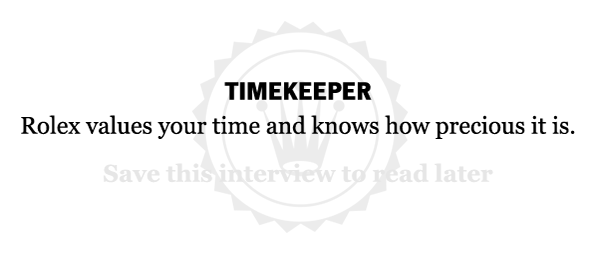
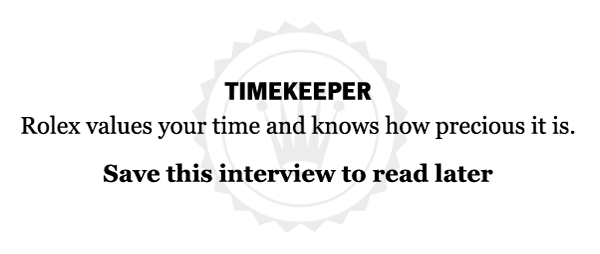
Short Profile
Name: Sir Peter Thomas Blake
DOB: 25 June 1932
Place of Birth: Dartford, Kent, England
Occupation: Artist
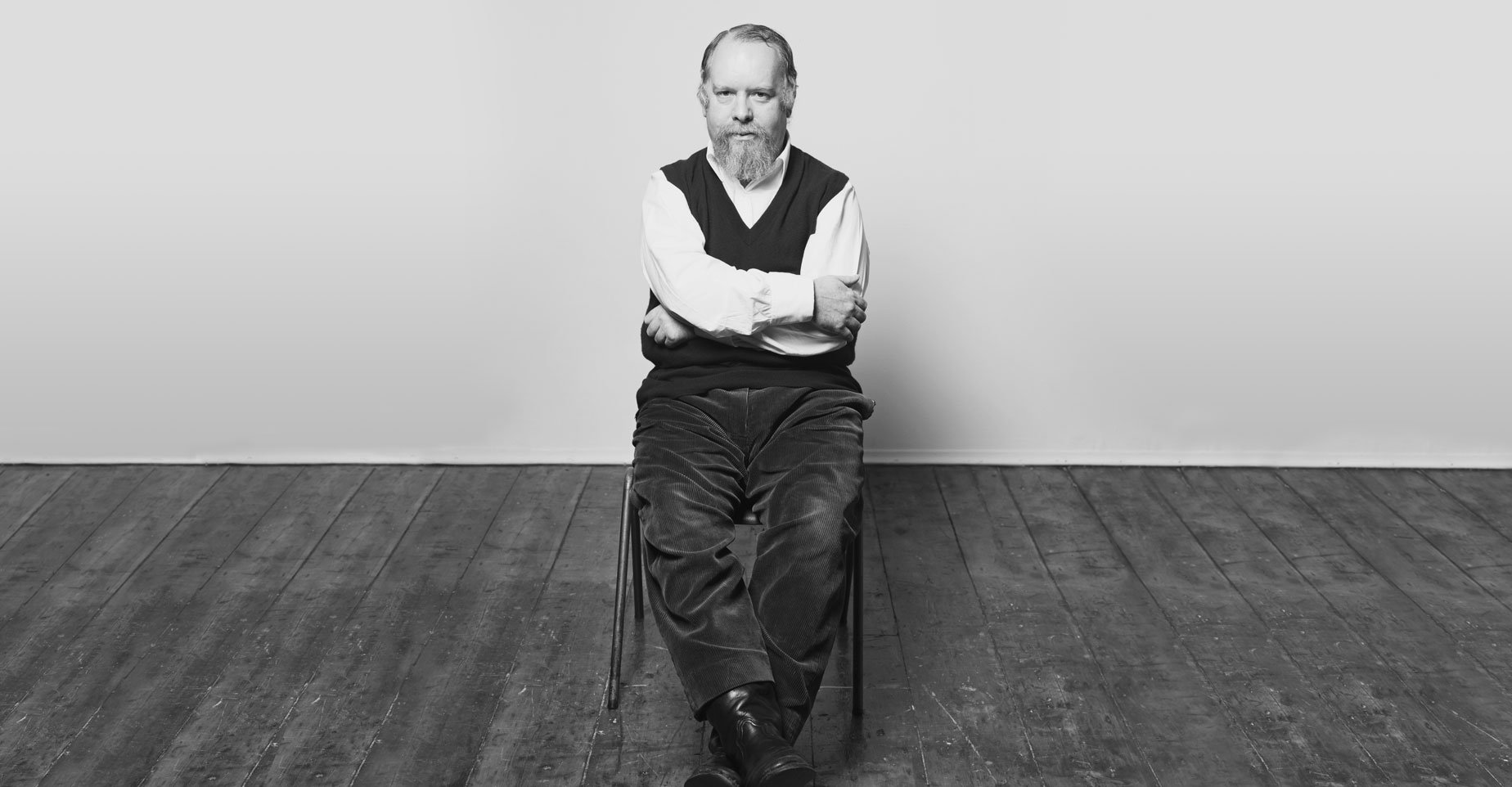
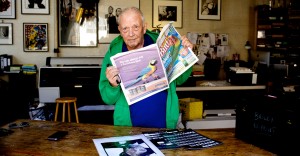
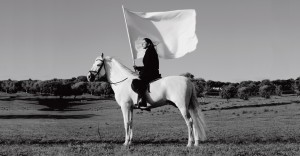
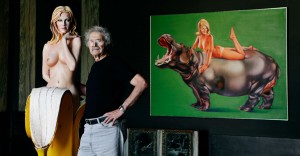

















Comments
write a comment, read comments